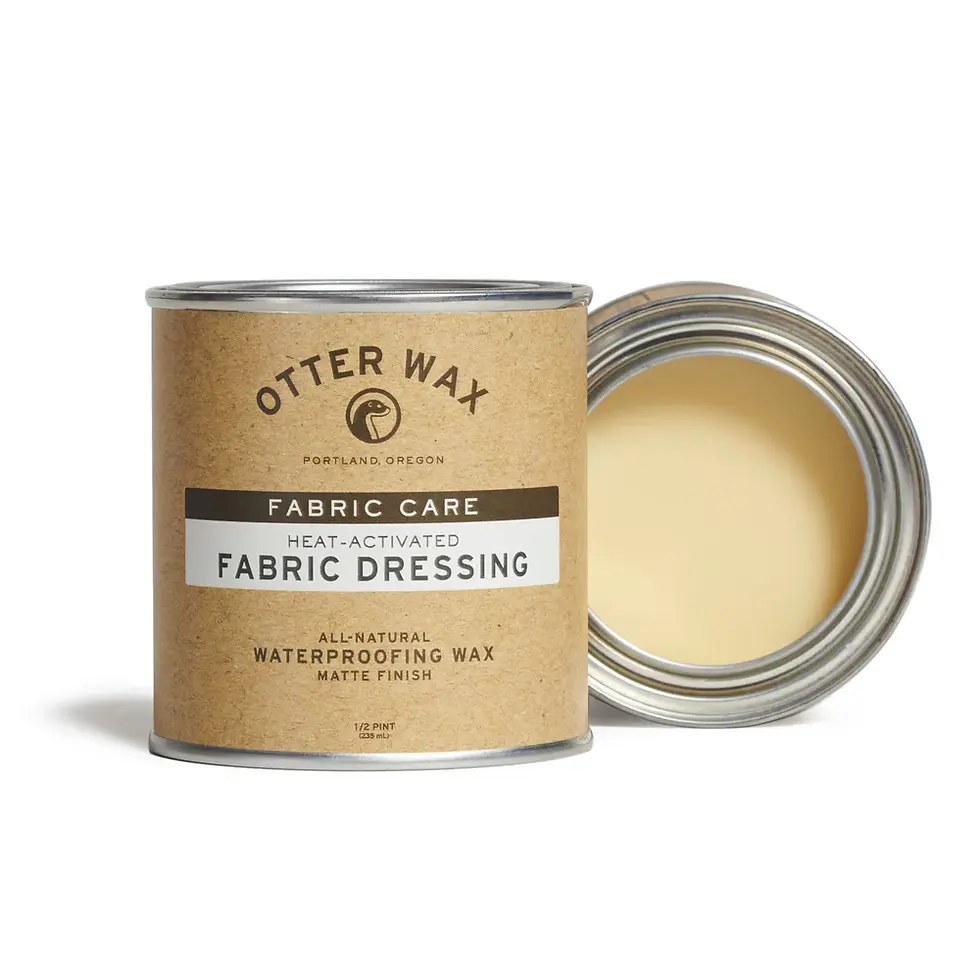The 3 best wax brands to reproof your wax jacket with
- Mr. Darcy Downpour

- Aug 15, 2024
- 3 min read
Updated: 1 day ago
A question I receive with some regularity is which wax I use to reproof my wax jackets. Therefore, I thought it appropriate to guide you when you're searching for the right wax to reproof your wax jacket. After reading this, you should hopefully know:
Which wax is best when you want to reproof your jacket yourself.
Why I, as a 'professional' hobbyist, create my own wax blend.
Re-waxing a jacket is quite a task, and not everyone chooses to do it themselves. So, I find it particularly commendable that you're taking the time and effort to read this article. There are several different waxes you can use to reproof your wax jacket. Here are the 3 best ones that I highly recommend:
The beauty of Otter Wax lies in its bar form, although you can obviously opt for a tin as well. However, perhaps the biggest advantage is that it contains no petroleum-based products. The wax is very easy to apply and can be used on a variety of garments, including caps, canvas bags, and more. With this method, you rub the wax onto your jacket first and then melt it into the fabric using a hairdryer or heat gun.

Naturally, Barbour must feature in this list. For many enthusiasts of waxed jackets, this is the go-to wax for reproofing. The wax is an excellent blend that, when applied, is neither too stiff nor too pliable. You begin by heating the wax in a bain-marie until it becomes liquid. Then, using a sponge, you apply the wax to the cotton. This is, of course, the most elegant method of application, but also the most laborious. It is highly advisable to carry out this process in a rather warm room, and the jacket should also be somewhat warm, as the wax hardens more quickly in a cold environment.

Greenbelt Wax is of outstanding quality. One of the advantages of Greenbelt is that the wax comes in various forms. You can order a container of wax, which, like Barbour's, you must first melt before use. Alternatively, you can opt for a wax that you rub directly onto your jacket and then work into the fabric. Additionally, there's a spray can option for applying the wax to your jacket. While this is undoubtedly the easiest method, it is not particularly eco-friendly, and in my experience, the results from a spray-can are not the best.
Why I Blend My Own Wax
As I mentioned earlier, I blend my own wax for two simple reasons. First and foremost, the cost. Particularly in late summer and autumn, I often wax multiple jackets per day on commission. To make this somewhat economically viable for myself (which it never is, really), it is simply cheaper to produce wax in large quantities. I purchase the ingredients for the wax in bulk, which reduces the cost. I then blend the wax and pour it into moulds designed for making soap bars. This allows me to produce 160 wax bars at once. It's a bit of work, but in the end, it saves me a lot of time.

But another very important reason is that I can tailor the wax to suit the type of jacket I’m waxing. For example, if it's a heavy-duty jacket for a farmer who spends every day outdoors in all weathers, I use less beeswax. This makes the wax much stiffer. Conversely, if it's a longer coat, I add more beeswax to the mix, which makes the wax more pliable and gives it a slight sheen. For the fashion-conscious customer who mainly wears their wax jacket on the sidewalks of Norwegian cities, I often opt for this blend.
